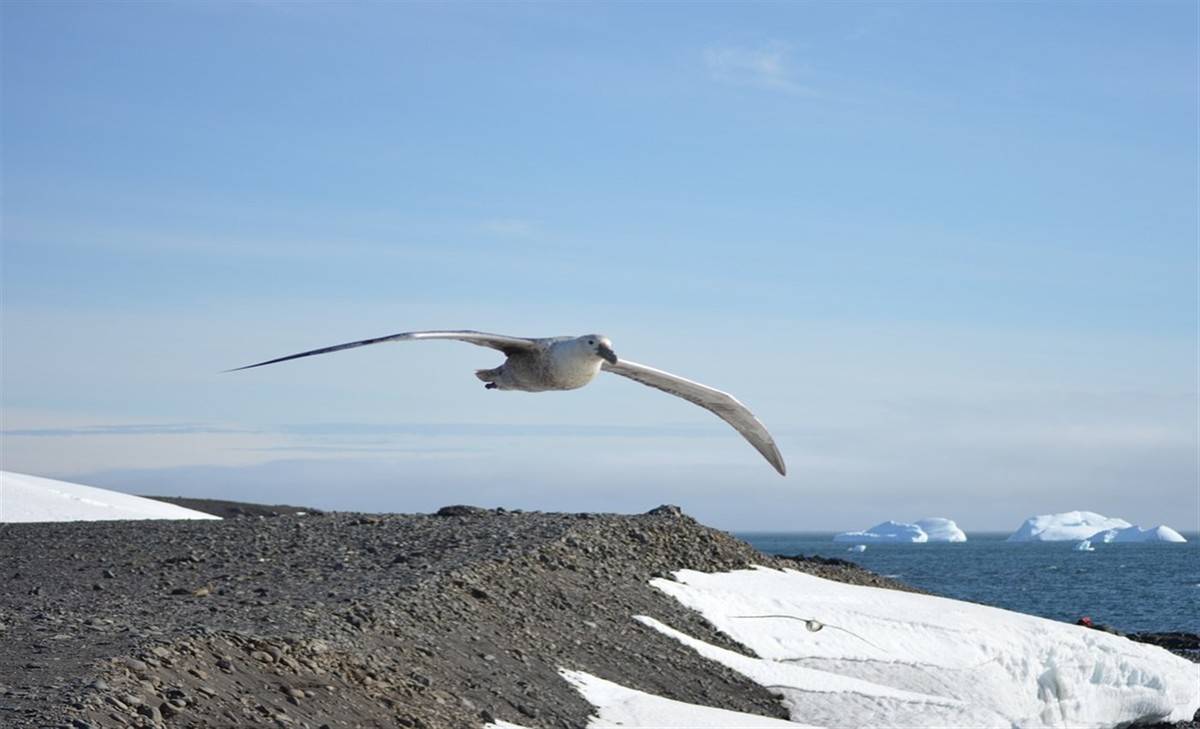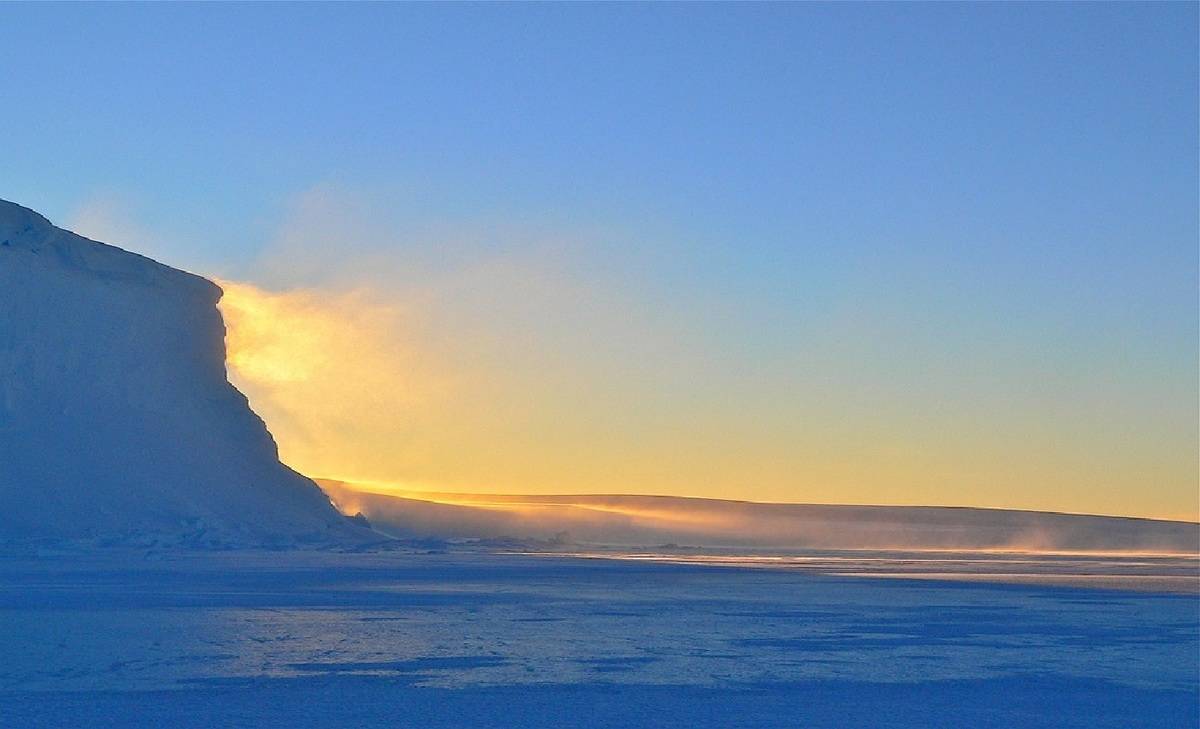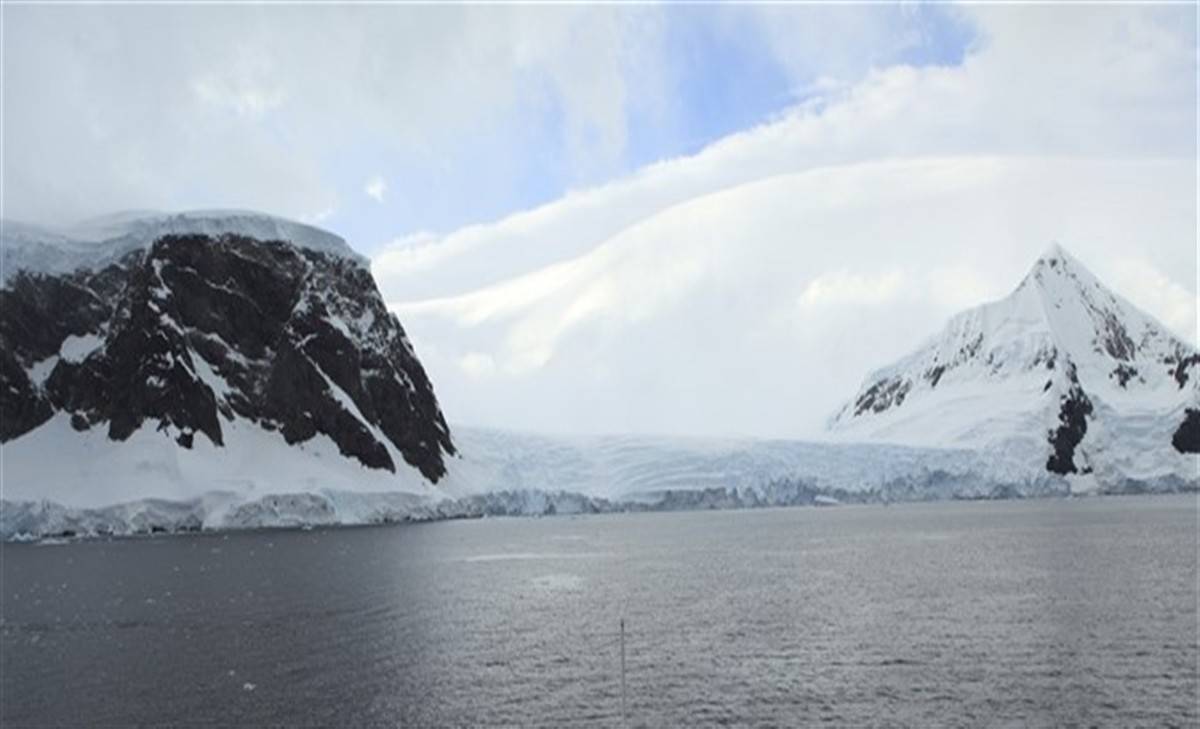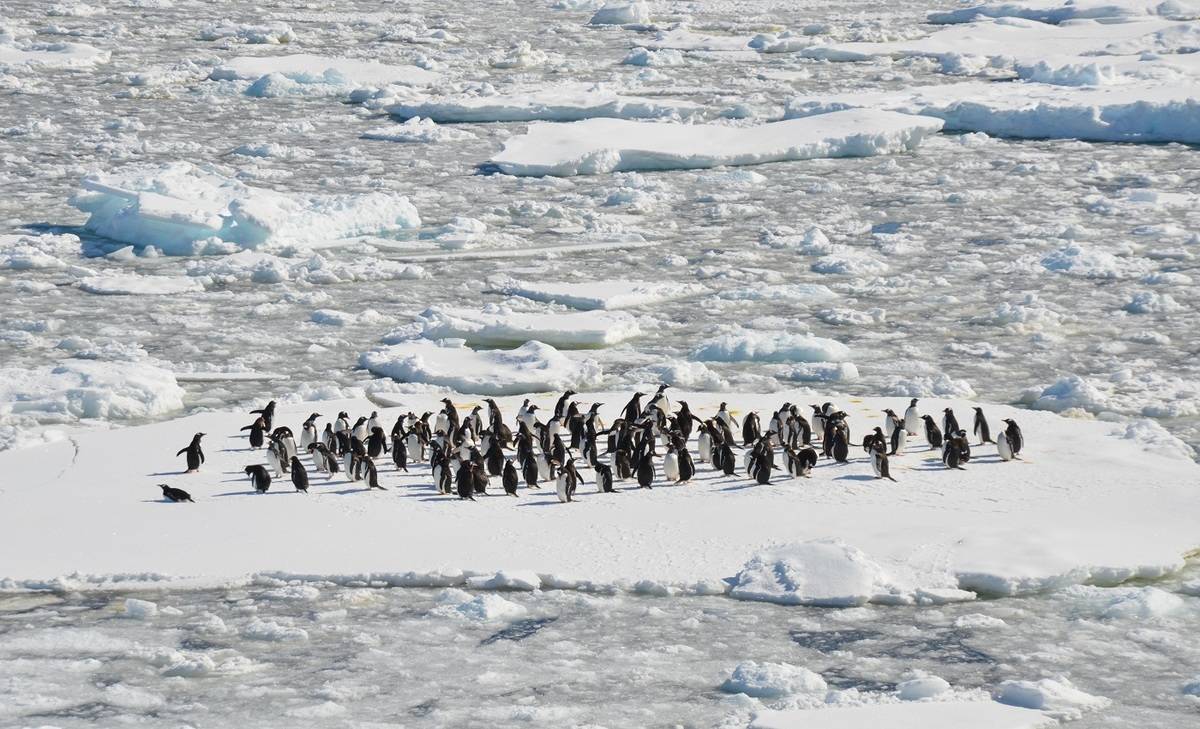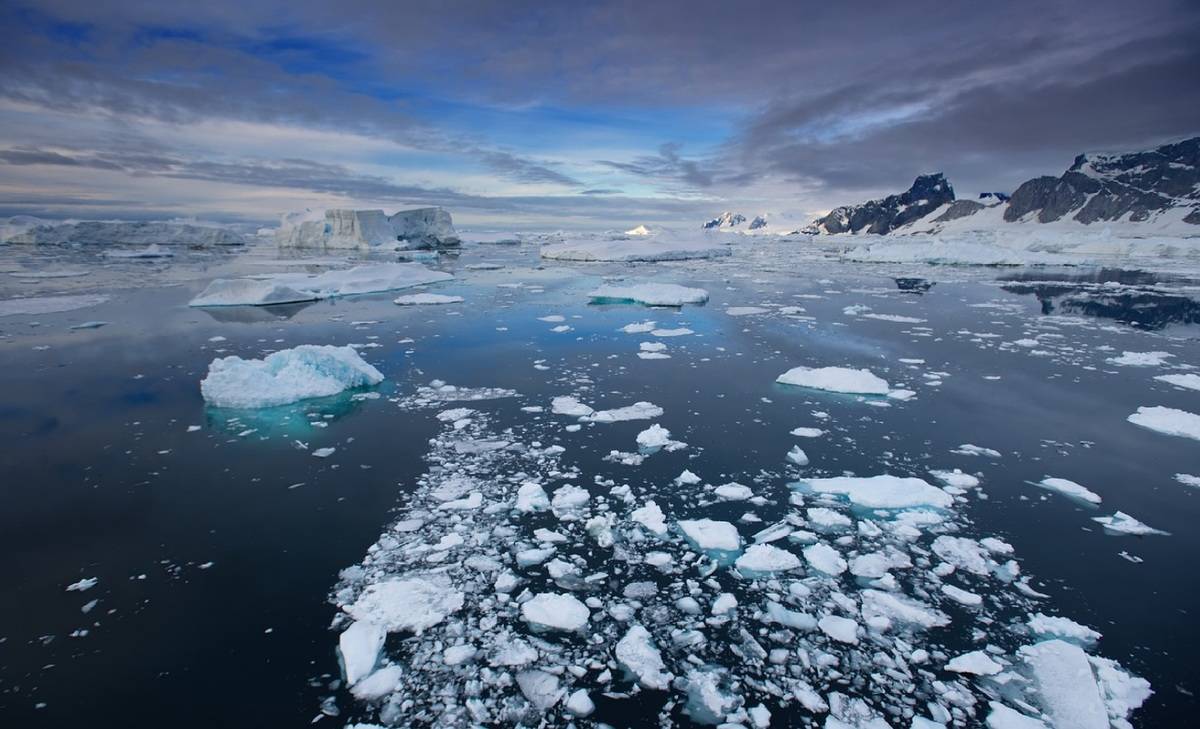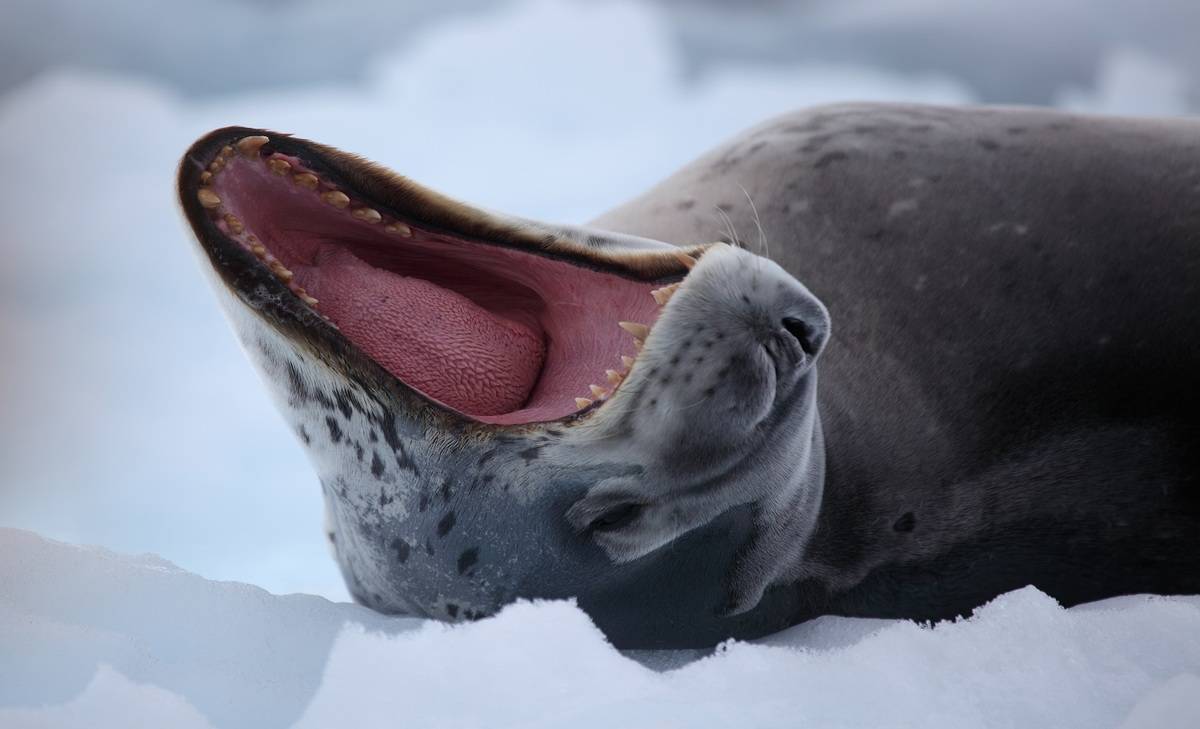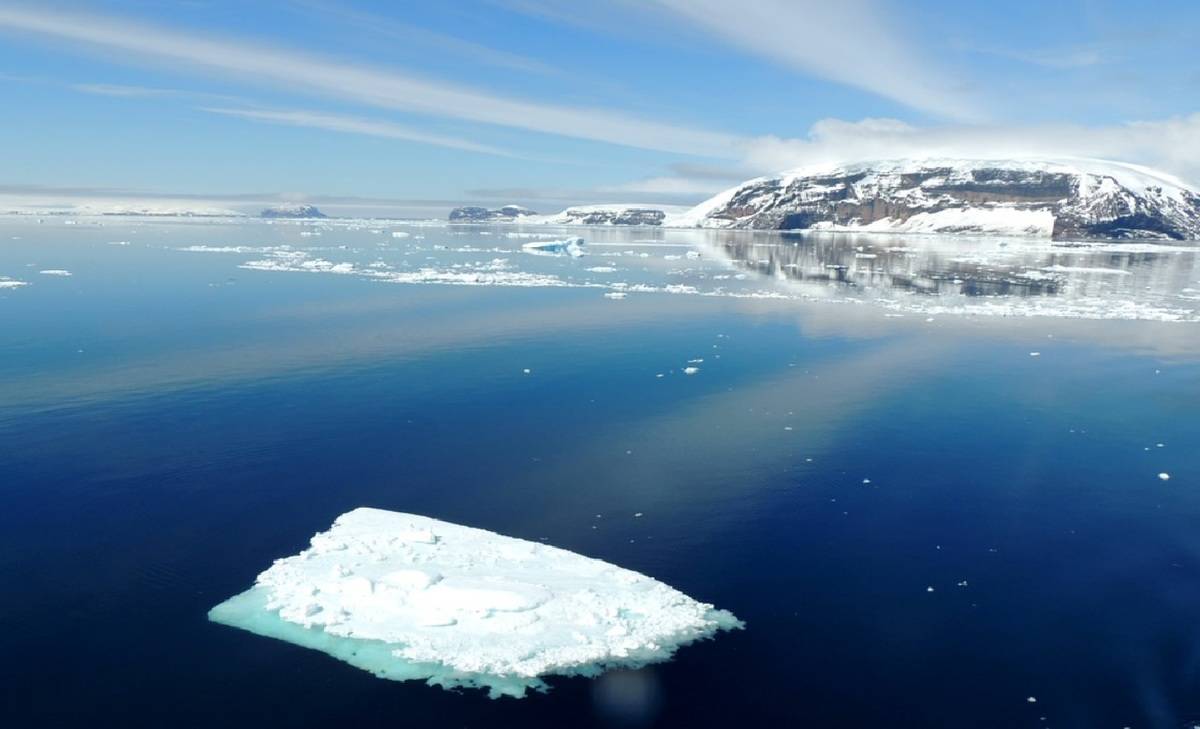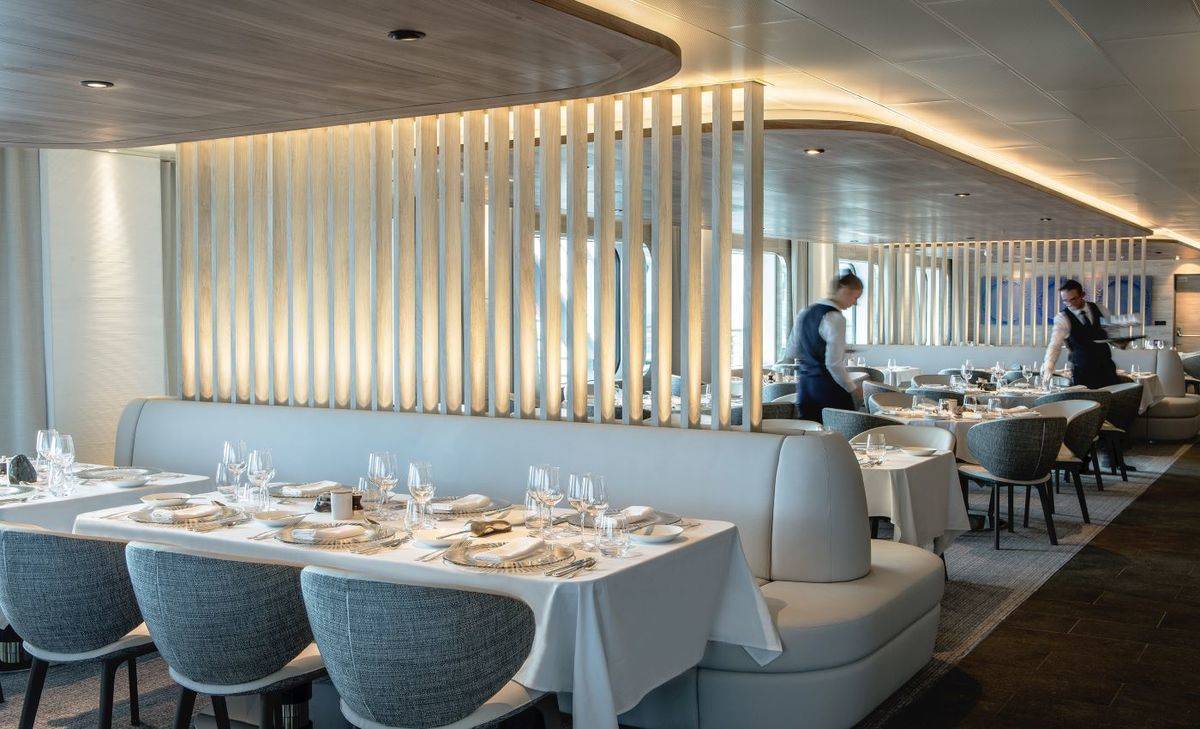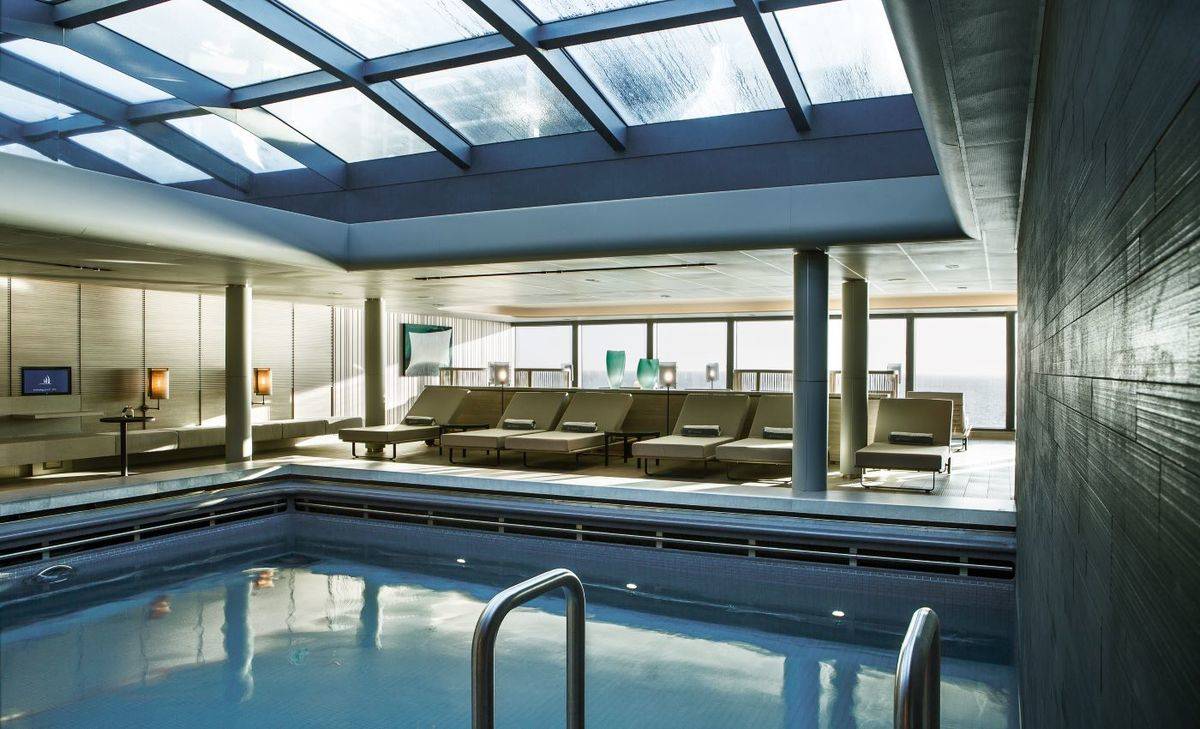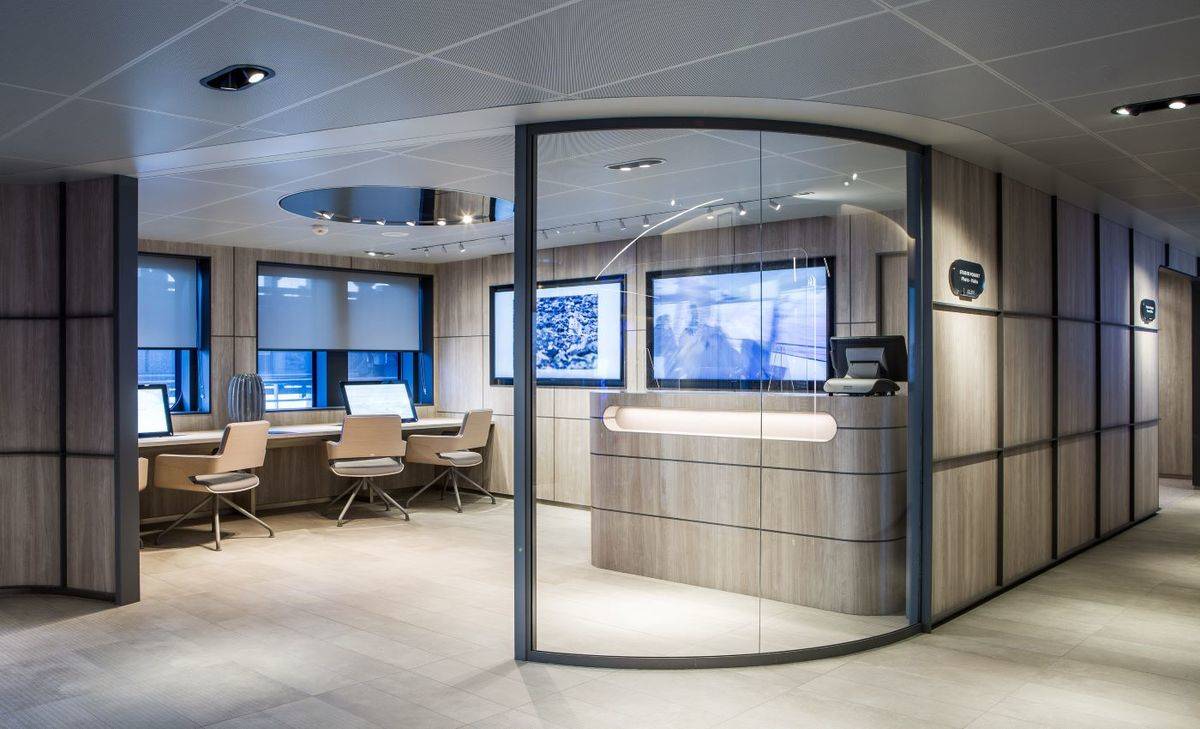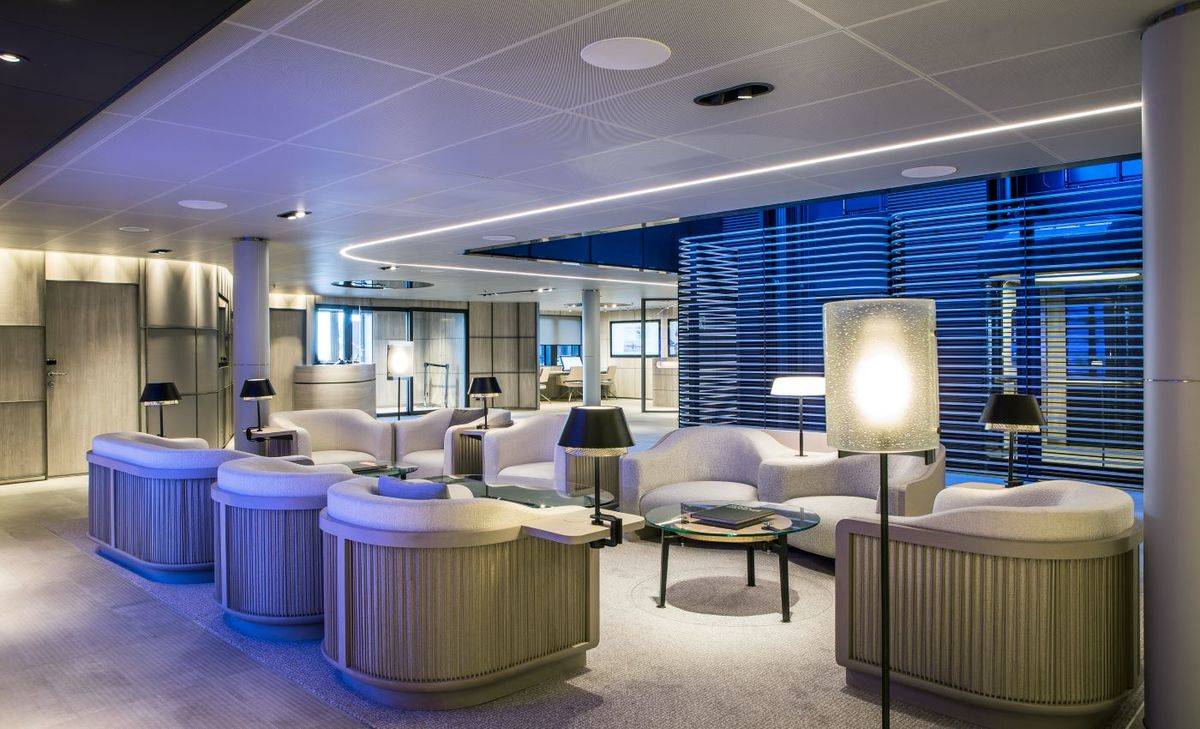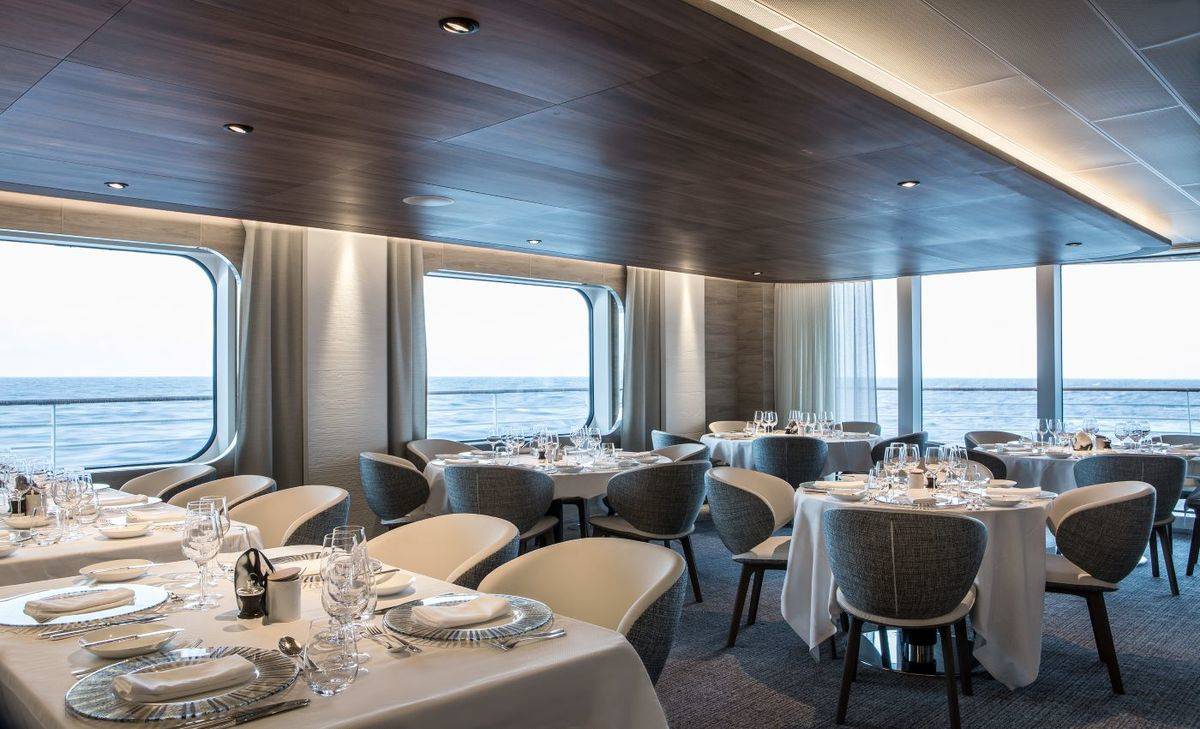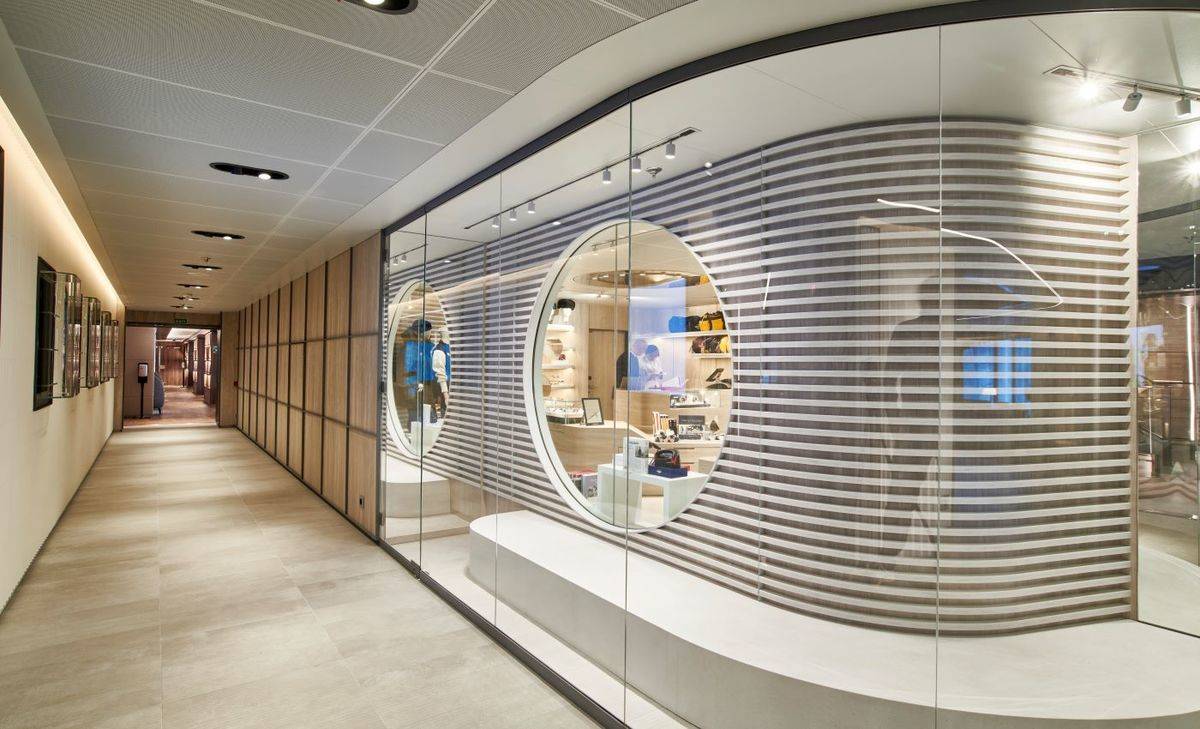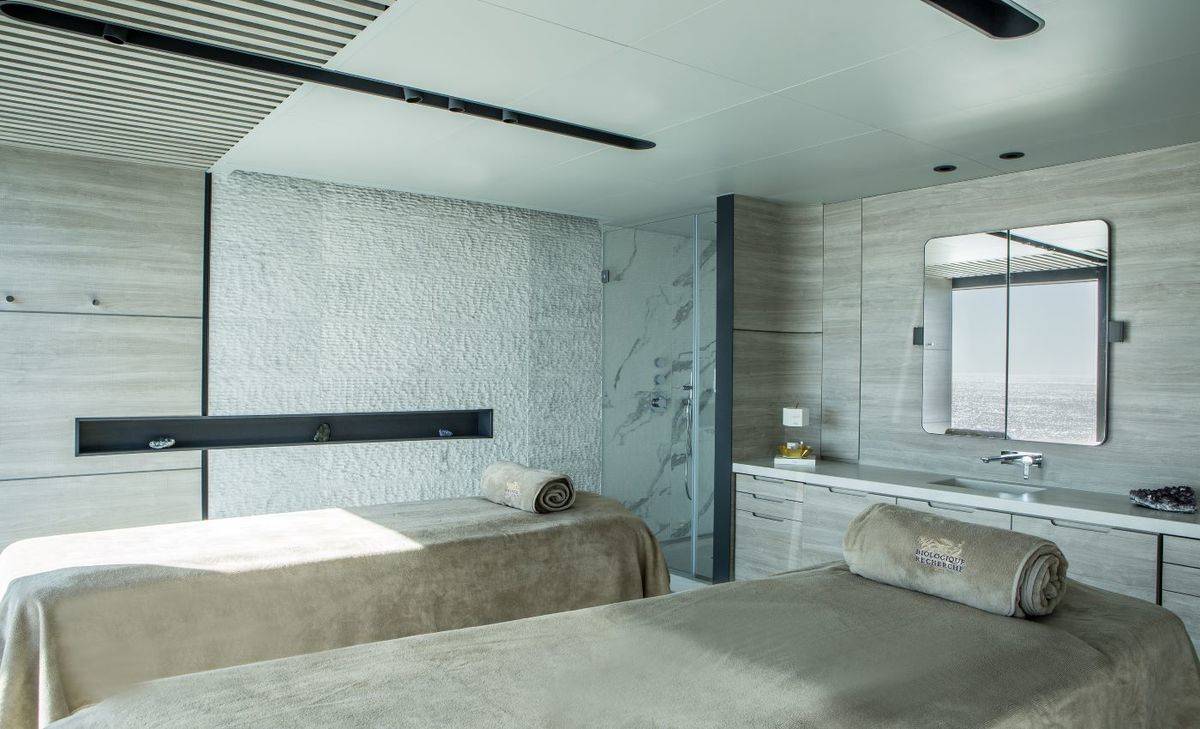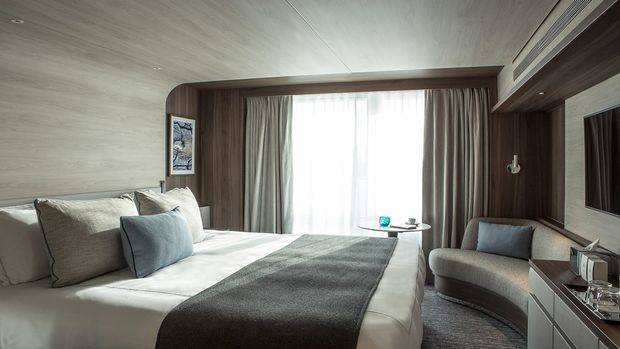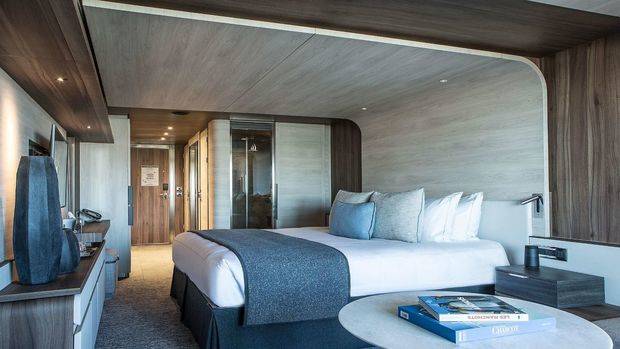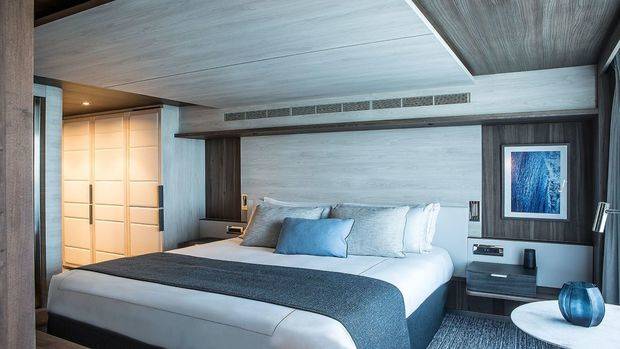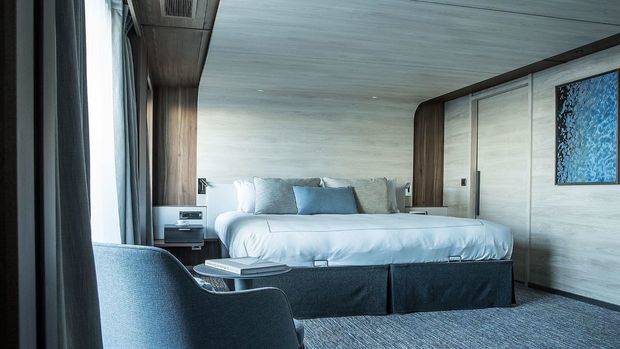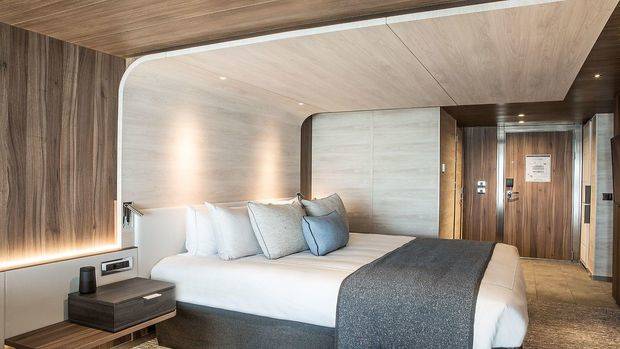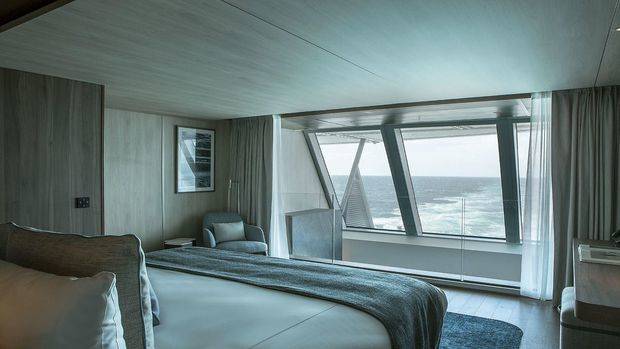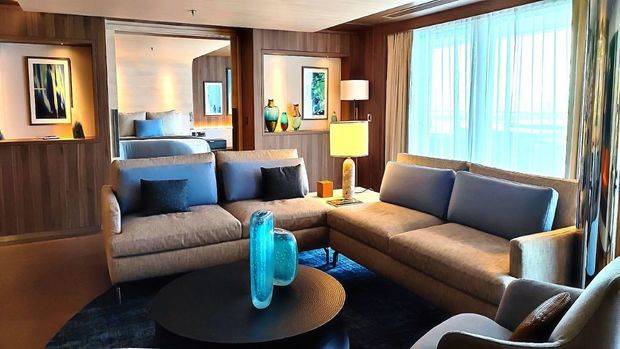Expedition to Charcot & Peter I Islands
16 Days - Le Commandant Charcot
Landing on Peter I Island is like landing on the moon! In fact, fewer people have visited this small volcanic island located in the Bellingshausen Sea, 450 km from the Antarctic coastlines, than have set foot on lunar soil. Discovered in February 1821, Peter I Island could only be approached for the first time in 1929, as the ice front made approach and disembarkation difficult. Its summit still remains untouched to this day. This unusual itinerary will also provide an opportunity to approach Charcot Island, thus named by Captain Charcot in memory of his father during its discovery in 1910.
from USD $21083pp

Home » 16 Day Le Commandant Charcot: Expedition to Charcot & Peter I Islands
Itinerary Highlights:
- Be among the few people on earth who have approached two islands beyond the Antarctic Polar Circle.
- Participate in outings and shore visits in Zodiac® inflatables.
- Enjoy lectures and information sessions hosted by our naturalist-guides.
- Have the opportunity to hike in Antarctica
- Spot fascinating Antarctic wildlife including humpback whales, gentoo penguins, Weddell seals.
- Enjoy a range of included activities: Hovercraft, hot air balloon, snowmobiles and more.
Itinerary in Brief:
- Day 1: Overnight in Santiago
- Day 2: Fly to Ushuaia & Embark
- Day 3-4: Cross the Drake Passage
- Day 5: Crossing the Antarctic Circle & Detaille Island
- Day 6: The Gullet & Porquoi Pas Island
- Day 7: Marguerite Bay
- Day 8-9: Expedition to Charcot Island
- Day 10-11: Expedition to Peter I Island
- Day 12: At Sea
- Day 13: The Gullet
- Day 14-15: Cross the Drake Passage
- Day 16: Ushuaia
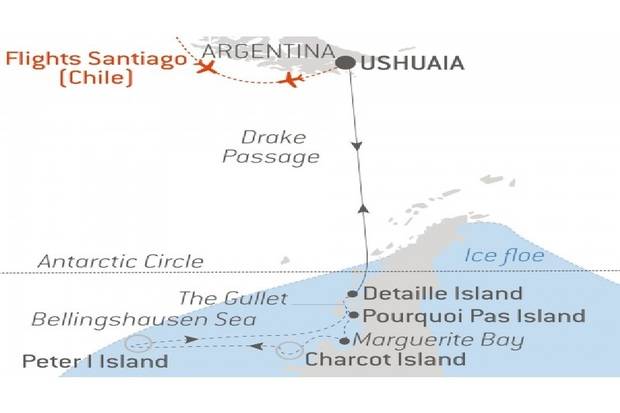
Day 1: Overnight in Santiago
Upon arrival at the airport you will be met and transferred to your pre-cruise accommodation organised by Ponant. You will have a meet and greet at the hotel and the remainder of the day is at your leisure to explore the city on your own.
Day 2: Ushuaia
A light breakfast will be served before leaving for the airport for your Santiago/Ushuaia flight.
Capital of Argentina's Tierra del Fuego province, Ushuaia is considered the gateway to the White Continent and the South Pole. Nicknamed “El fin del mundo” by the Argentinian people, this city at the end of the world nestles in the shelter of mountains surrounded by fertile plains that the wildlife seem to have chosen as the ultimate sanctuary.
Embarkation begins at 4pm.
Day 3-4: Cross the Drake Passage
Use your days spent in the Drake Passage to familiarise yourself with your ship and deepen your knowledge of the Antarctic. The Expedition Leader will first present the IAATO rules of conduct that must be observed during landings in the region and will explain everything you need to know about the Zodiac outings. Lectures about the history and wildlife of the Antarctic will be an opportunity for you to learn more about this magical region, where every cruise is a unique experience. From the ship’s bridge, you will experience exceptional sailing moments before joining the naturalist-guides on your ship’s exterior decks to look out for albatrosses, cape petrels, and other seabirds flying over the Drake Passage.
Day 5: Crossing the Antarctic Circle & Detaille Island
Weather permitting, we'll cross the mythic line of the Antarctic Polar Circle, located along 66°33’ south of the Equator. This iconic area demarcates the point from which it is possible to view the midnight sun during the December solstice. Within this circle, the sun remains above the horizon for 24 consecutive hours at least once a year. Crossing this line, an experience known to few people, is sure to be an unforgettable highlight of your cruise through the polar regions.
Detaille Island is a small island situated off the Loubet Coast in the Crystal Sound, a magnificent region surrounded by snow-covered peaks. A British research station was set up there in 1956, ahead of the International Geophysical Year 1957-58. Like the International Polar Years, organised for the first time in 1882-83, the purpose of this event was to take a coordinated approach to the geophysical research conducted by the different nations. With the island difficult to access, this station was shut down in 1959. The vestiges of the buildings and sledge dog pens that made it possible to map more than 4,000 miles around the island are now maintained by the United Kingdom Heritage Trust.
Day 6: The Gullet & Pourquoi Pas Island
The sumptuous landscapes of this narrow channel between Adelaide Island and Graham Land attract all visitors sailing towards Marguerite Bay. It is like an ice palace, its immaculate white walls reflected in the frozen mirror formed by the waters of the Southern Ocean, scattered with icebergs and gleaming blocks of ice. This passage was explored for the first time by the Jean-Baptiste Charcot expedition in 1909, which sketched its position. It was then surveyed in 1936 by the British expedition under John Rymill. It is here in this magical setting that some of the first subaquatic images of the Antarctic were shot during Philippe Cousteau’s four-month expedition to Antarctica between 1972 and 1973.
Le Commandant Charcot will land on the coast of Pourquoi Pas Island, so named in the 1930s by John Riddoch Rymill in honour of Jean-Baptiste Charcot, who discovered it from aboard his ship Le Pourquoi Pas ? during his second expedition to Antarctica between 1908 and 1910. This mountainous island, situated in the north of Marguerite Bay between Graham Land and Adelaide Island, is 28 km long and 14 km large. It is scattered with narrow fjords and snow-covered mountains. You will go to shore in a Zodiac® dinghy with your expedition team and you could get the chance to observe Adelie penguins going about their business on the island’s rocky shores.
Day 7: Marguerite Bay
The icebergs are each more majestic than the next and scattered around the deep and intense blue waters of Marguerite Bay, one of the most beautiful regions in the Antarctic. It is delimited in the north by the mountainous Adelaide Island, in the south by George VI Sound and Alexander Island, and in the east by the Fallières Coast. Charcot named it after his wife during his second expedition to the Antarctic between 1908 and 1910. In 1909, in the southern summer when the skies are at their clearest, he led an important scientific mission to map and study this region. The bay is home to a number of cetaceans and you may get the chance to observe leopard seals or Adelie penguins.
Day 8-9: Expedition to Charcot Island
When he discovered this island surrounded by sea ice in 1910 from aboard the Pourquoi Pas ? as he mapped Alexander Island, Jean-Baptiste Charcot had not be able to get less than 40 miles away from it. Situated in a zone that experiences frequent low-pressure systems and regular cloud cover, the island remains in many ways an enigma. It is entirely covered in ice and sheer cliffs, with the exception of the rocky outcrops extending over a dozen kilometres in the far north-west. The ice in the narrowest part of Wilkins Sound has been cracking in recent times, thus officially detaching this island from its neighbour, Alexander Island, lying 50 km away. Very few people have landed on this largely untouched island, whose waters attract numerous seabirds, such as petrels, Antarctic terns and skuas.
Day 10-11: Expedition to Peter I Island
You will then head for the legendary Peter I Island. Located 450 km away from the Atlantic coast, it was discovered in 1821 by the Russian explorer Fabian Gottlieb von Bellingshausen, who named it in honour of the Russian tsar Peter the Great. In 1909, Captain Charcot sighted it for the first time from aboard the Pourquoi Pas ?, but was unable to land there: “In the parting mists, one or two miles away, an enormous black mass shrouded in clouds appears suddenly before us: it is Peter I Island.” Surrounded by pack ice and with about 95% of its surface covered by ice, this volcanic island, whose highest peak reaches 1,640 metres, is protected by ice cliffs some 40 metres tall, making any approach difficult.
Day 12: At Sea
Spend exceptional moments sailing aboard Le Commandant-Charcot, the world’s first luxury polar exploration vessel and the first PC2-class polar cruise ship capable of sailing into the very heart of the ice, on seas and oceans which the frozen conditions render inaccessible to ordinary ships. Le Commandant-Charcot is fitted with oceanographic and scientific equipment selected by a committee of experts. Take advantage of the on-board lectures and opportunities for discussion with these specialists to learn more about the poles. Participate in furthering scientific research and let us discover together what these fascinating destinations have yet to reveal to us.
Day 13: The Gullet
The sumptuous landscapes of this narrow channel between Adelaide Island and Graham Land attract all visitors sailing towards Marguerite Bay. It is like an ice palace, its immaculate white walls reflected in the frozen mirror formed by the waters of the Southern Ocean, scattered with icebergs and gleaming blocks of ice. This passage was explored for the first time by the Jean-Baptiste Charcot expedition in 1909, which sketched its position. It was then surveyed in 1936 by the British expedition under John Rymill. It is here in this magical setting that some of the first subaquatic images of the Antarctic were shot during Philippe Cousteau’s four-month expedition to Antarctica between 1972 and 1973.
Day 14-15: Crossing the Drake Passage
If there is one place, one sea, one waterway dreaded by tourists, researchers and hardened seafarers alike, it is undoubtedly Drake Passage. Situated at the latitude of the infamous Furious Fifties winds, between Cape Horn and the South Shetland Islands, it is the shortest route to connect Antarctica to South America. Seasoned navigators will tell you that you must earn your visit to the White Continent! As the Antarctic convergence zone where cold currents rising up from the South Pole meet warmer equatorial water masses, Drake Passage harbours a very diverse marine fauna. Don't forget to look to the sky to catch a glimpse of elegant albatross and Cape petrels, playfully floating about in the wind around your ship.
Day 16: Ushuaia
Following disembarkation this morning you will be transferred to the airport for your return flight to Santiago.
| Dates | Cabin | From | Special Offer |
|---|---|---|---|
| 01 Jan 2023 - 16 Jan 2023 | USD $21083pp | ||
| Prestige Stateroom Deck 6 | USD $21083pp | Contact us | |
| Prestige Stateroom Deck 7 | USD $21462pp | Contact us | |
| Prestige Stateroom Deck 8 | USD $21848pp | Contact us | |
| Deluxe Suite Deck 6 | USD $22421pp | Contact us | |
| Deluxe Suite Deck 7 | USD $23372pp | Contact us | |
| Deluxe Suite Deck 8 | USD $24138pp | Contact us | |
| Prestige Suite Deck 7 | USD $30621pp | Contact us | |
| Prestige Suite Deck 8 | USD $31586pp | Contact us | |
| Grand Prestige Suite Deck 6 | USD $32538pp | Contact us | |
| Privilege Suite Deck 8 | USD $34448pp | Contact us | |
| Suite Duplex | USD $46855pp | Contact us | |
| Owner's Suite | USD $73069pp | Contact us | |
**Prices are per person based on twin / shared accommodation.
**Single supplements may apply
Cabin Details
Prestige Stateroom Deck 6
20 metres-squared, private balcony, private bathroom with shower and French bath products, individually-controlled air conditioning, minibar, television, iPod dock, safety deposit box, dressing table with hair dryer, direct line telephone, 110V American / 220V European outlets, WiFi internet access
Prestige Stateroom Deck 7
20 metres-squared, private balcony, private bathroom with shower and French bath products, individually-controlled air conditioning, minibar, television, iPod dock, safety deposit box, dressing table with hair dryer, direct line telephone, 110V American / 220V European outlets, WiFi internet access
Prestige Stateroom Deck 8
20 metres-squared, private balcony, private bathroom with shower and French bath products, individually-controlled air conditioning, minibar, television, iPod dock, safety deposit box, dressing table with hair dryer, direct line telephone, 110V American / 220V European outlets, WiFi internet access
Deluxe Suite Deck 6
28 metres-squared, private balcony, private bathroom with shower and French bath products, individually-controlled air conditioning, minibar, television, iPod dock, safety deposit box, dressing table with hair dryer, direct line telephone, 110V American / 220V European outlets, WiFi internet access
Deluxe Suite Deck 7
28 metres-squared, private balcony, private bathroom with shower and French bath products, individually-controlled air conditioning, minibar, television, iPod dock, safety deposit box, dressing table with hair dryer, direct line telephone, 110V American / 220V European outlets, WiFi internet access
Deluxe Suite Deck 8
28 metres-squared, private balcony, private bathroom with shower and French bath products, individually-controlled air conditioning, minibar, television, iPod dock, safety deposit box, dressing table with hair dryer, direct line telephone, 110V American / 220V European outlets, WiFi internet access
Prestige Suite Deck 7
40 metres-squared, private balcony, private bathroom with 2 showers and French bath products, individually-controlled air conditioning, minibar, television, iPod dock, safety deposit box, dressing table with hair dryer, direct line telephone, 110V American / 220V European outlets, WiFi internet access
Prestige Suite Deck 8
40 metres-squared, private balcony, private bathroom with 2 showers and French bath products, individually-controlled air conditioning, minibar, television, iPod dock, safety deposit box, dressing table with hair dryer, direct line telephone, 110V American / 220V European outlets, WiFi internet access
Privilege Suite Deck 8
48 metres-squared, private balcony, private bathroom with shower and bathtub, butler service, individually-controlled air conditioning, minibar, television, iPod dock, safety deposit box, French bath products, dressing table with hair dryer, direct line telephone, 110V American / 220V European sockets, WiFi internet access
Grand Prestige Suite Deck 6
42 metres-squared, private balcony, private bathroom with shower and bathtub, butler service, individually-controlled air conditioning, minibar, television, iPod dock, safety deposit box, French bath products, dressing table with hair dryer, direct line telephone, 110V American / 220V European sockets, WiFi internet access
Suite Duplex
48 metres-squared, private balcony, jacuzzi, private bathroom with shower and bathtub, butler, individually-controlled air conditioning, minibar, television, iPod dock, safety deposit box, French bath products, dressing table with hair dryer, direct line telephone, 110V American / 220V European sockets, WiFi internet access
Owner's Suite
114 metres-squared, private balcony with jacuzzi, private bathroom with shower and bathtub, butler service, individually-controlled air conditioning, minibar, television, iPod docks, safety deposit box, French bath products, dressing table with hair dryer, direct line telephone, 110V American / 220V European outlets, WiFi internet access
Le Commandant Charcot Deckplan
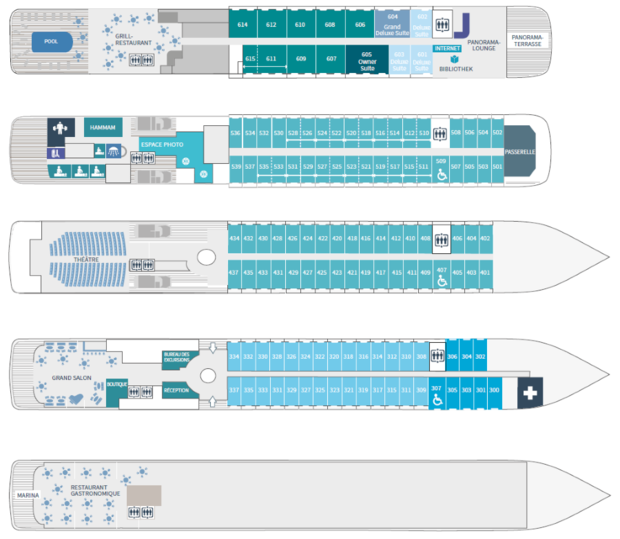
Specifications
- Length: 150m
- Width: 28m
- Draught: 10
- Ice Class: PC2
- Propulsion: LNG and Hybrid Electric
- Shipyard: VARD
- Classification: Bureau Veritas
- Flag: French
- Crew Members: 190
- Passengers: 270
- Guest capacity Antarctica: 200 pax
- Onboard Expedition Zodiac: 16
- Staterooms and Suites: 135 (including 31 suites)
- Panoramic Restaurant: 1
- Grill Restaurant: 1
- Swimming Pools: 2 (indoor pool and winter garden, outdoor pool)
- Spa, Sauna, Fitness Room: 1
Whats included?
- Transfer from airport upon flight arrival or from your chosen pick-up location within a 50-kilometer range from Santiago city centre
- 1-night accommodation in a 5* hotel the night before embarkation
- Return flight Santiago/Ushuaia/Santiago selected by PONANT, in economy class
- Meals as mentioned in the programme and beverage package
- Transfers as mentioned in the programme
What’s not included?
- International flights
- Travel insurance
- Tips for the local guide
- Personal expenses
- Other meals and services not mentioned in the programme
Notes
8 Jan 2022 departure will operate in partnership with National Geographic Expeditions: A National Geographic expert and photographer join this voyage to share their knowledge and insights. They will enrich the expedition experience through fascinating presentations and informal discussions. See the world through the lens of a National Geographic photographer, learning new techniques along the way.

